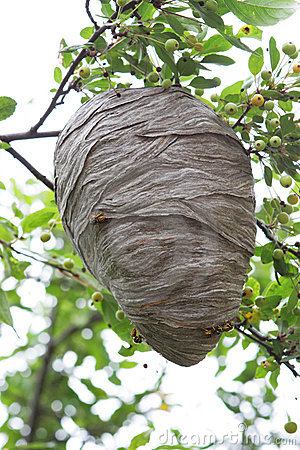How to Remove a Beehive Safely

Seeing a beehive on your property usually gives people one of those lump in your throat type of feelings. The thought of having an entire colony of bees doing their thing somewhere near your family and home can be down right bothersome. Luckily, if you are willing to remove the hive yourself, it can be easy and relatively safe.
If you or your family have bee allergies, you should avoid removing their hives. Feel free to contact local pest control companies if you are not comfortable carrying these steps out.
Instructions
-
1
Allergies
It is important that you understand the allergy tolerances of you and your family members. If you do not know about someone's allergies to bees, you should have them checked.
Do not attempt to remove a hive if you are allergic to bees. -
2
Protection
Be sure to cover your body as well as you can before attempting to remove the hive. It is suggested that you wear light coloured and smooth textured clothing. Multiple layers are strongly suggested, as are thick gloves and protection for your face and neck. If possible, a bee keeper's veil is an excellent item to wear.
Do not wear perfume, colognes or other scents. -
3
Location
It is extremely important to determine the exact location of the beehive. This may sound obvious, but there may be a hive in the wall of your house, open chimney or even your barbecue.
If you see several bees near an area, observe them from a distance to aid the process. -
4
Best Time
The best time to remove beehives is in late winter or very early spring. This ensures that the number of bees in the hive is at its minimum as compared to the rest of the year.
On the day you choose to remove the hive, ensure you are doing so either early in the morning or in the evening as this is when bees tend to rest or sleep. -
5
What To Use
Go to your local hardware store and ask for the best insecticide or bee removal spray. Aerosol cans allow you to keep a safe distance from the hive. If the hive is located in your walls, you may need to tap the wall with a hammer and listen for the buzzing of bees. If the area cannot be accessed, you may need to bore a hole from the outside of your home to the hive and spray through that. -
6
Spray and Repeat
Using the insecticide, spray the hive as well as possible. Be sure to get into the hive with the spray as well as you can. You should be able to see the bees dying and being affected by the insecticide. Repeat the spray process as required based on the number of bees remaining. -
7
Disposal
Once it appears as if there are no bees remaining, use a plastic garbage bag to carefully wrap and remove the beehive. Securely fasten the top of the bag and place in a garbage can (preferably with a lid).
Once you have done so, go back to the site and ensure that any open passages to the former hive are blocked and that another hive cannot exist there in the future.







